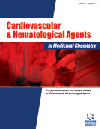
Full text loading...
We use cookies to track usage and preferences.I Understand

Red blood cells with sickle cell anemia (SCA) have an irregular shape, and it is a genetic blood condition that can cause several problems and shorten life expectancy. Traditional treatments have focused on symptom management, but recent advancements in drug delivery systems offer promising pathways for targeted therapies. This abstract explores novel approaches to combat SCA through innovative drug delivery systems, gene therapy, and new pharmaceutical interventions. One novel pathway for targeting SCA involves utilizing advanced drug delivery systems to enhance the effectiveness of therapeutic agents. Nanotechnology-based delivery systems, such as nanoparticles and liposomes, offer precise drug targeting, controlled release, and improved bioavailability. These systems can encapsulate anti-sickling agents, like hydroxyurea, and enable their specific delivery to affected cells, reducing side effects and enhancing therapeutic outcomes. Additionally, therapy has become a ground-breaking method of treating SCA. CRISPR/Cas9 technology presents a groundbreaking opportunity to correct the genetic mutation responsible for sickle hemoglobin production. By precisely editing the HBB gene, which encodes the abnormal hemoglobin, researchers aim to restore normal hemoglobin expression, potentially offering a curative treatment for SCA. Furthermore, recent advancements in drug development have led to the discovery of promising candidates targeting specific pathways involved in SCA pathophysiology. Experimental drugs, such as voxelotor and crizanlizumab focus on modifying hemoglobin properties or inhibiting cell adhesion, respectively, thereby preventing sickle cell-related complications and reducing vaso-occlusive crisis frequency.

Article metrics loading...

Full text loading...
References


Data & Media loading...